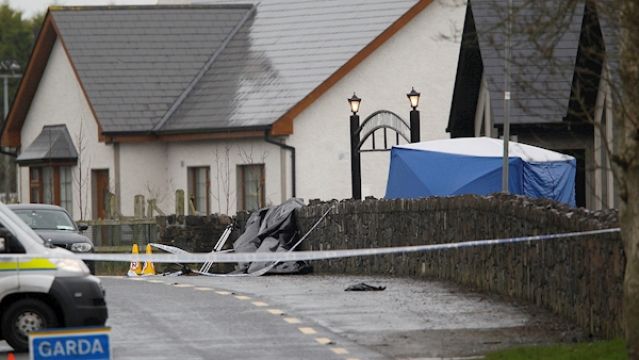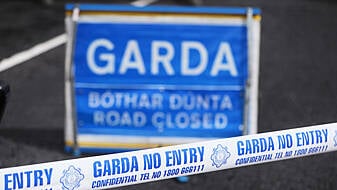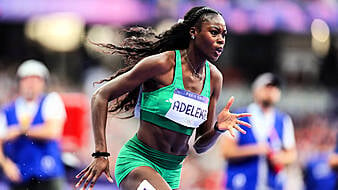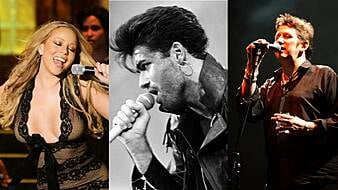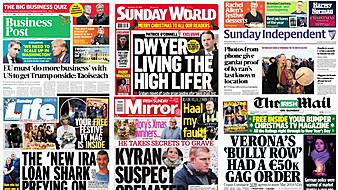Only 15 hours earlier, Brady had shot Detective Garda Adrian Donohoe in the head with an automatic shotgun, killing him instantly.
Just a few miles away a family and community grieved while Det Gda Donohoe’s colleagues, who had no time to grieve, combed the border region for anything that might help to identify the gunman and his accomplices.
Sgt Moroney had been leading a search of the roadside a short distance from the scene of the robbery and shooting when he spotted Brady in the passenger seat of his best friend’s car and decided to pull them over and question the two men. A convincing and accomplished liar, Brady weaved a story that used partial truths and realistic scenarios to wriggle free from the garda’s grip. He was calm and self-assured, according to Sgt Moroney. The ease with which he lies would be seen again and again, when he gave a voluntary statement replete with lies to gardai ten days later and when he entered the witness box seven years later and tried to convince a jury that he was nothing more than a small-time criminal who would do any odd job going and would have nothing to do with armed robberies and murder. “If I hit a dog on the road I’d be shook,” he told the jury at one point, asking them to believe there was no way he could have shot the detective and then sat calmly with Sgt Moroney telling him lie after lie.
The robbery had gone disastrously wrong. With a garda dead the full force of the State’s resources had been unleashed. And the robbers had earned themselves a paltry €7,500 because they failed to target the car carrying the main evening’s takings of €17,000. Brady had money problems at the time with a case before the circuit court that was going to require him to pay thousands of euro in compensation to avoid jail. He was also planning to buy a car for his girlfriend Jessica King.
Rather than solving their money woes, Brady and his alleged accomplices would flee within weeks to America and Australia to escape the clutches of gardai. But Brady, the shooter, would assemble his own petard in his new home in New York where he couldn’t help himself boasting about his crime. “I’m the most feared gangster in Ireland,” he’d say. “I shot a cop.” Or in his drunkenness he’d lament, “you don’t know what it’s like to do the things I’ve done.”
Brady’s involvement in the robbery at Lordship was established through circumstantial evidence that showed he was involved in stealing the Volkswagen Passat used in the robbery and that his activities at the time of the raid on Lordship were at least suspicious. His lies to gardai added to the suspicion. But it was his repeated admissions to the killing that enabled investigators to nominate him as the shooter and to prove to a jury that he was the man who pulled the trigger.
Suspect B
Immediately after the shooting Dundalk-based Detective Inspector Pat Marry (now retired), who was in charge of the investigation, asked his detectives to draw up a list of locals who might be involved in such a robbery. One name was to the forefront, he became known during the trial as Suspect B. This man was believed to have been involved in an almost identical robbery on Lordship Credit Union two years earlier which had netted €22,500. He was also suspected of involvement in a robbery at Dundalk Racecourse in October 2011 which netted £1,725 (STG) and €6,825. Gardai were on the lookout for anyone associated with Suspect B and among his known associates were Aaron Brady and Brady's best friend, Suspect A.
Brady had told Sgt Moroney that he was with his girlfriend Jessica King from 7.30pm until 3am on the night of the robbery. The raid happened shortly after 9.25pm so officers from the Police Service of Northern Ireland were called on to take statements from Ms King and her family who lived across the border on Concession Road in south Armagh. They arrived within an hour of Brady being stopped by Sgt Moroney. Jessica lied to them because she believed Brady was laundering diesel the previous night and she also knew that he was under curfew due to matters before the Circuit Criminal Court. She didn’t want to reveal that he had arrived at her house some time after 11pm and stayed until 3am when she knew he was required to be at home by 9pm every night. Her friend Jade Fitzpatrick also lied to protect Brady from consequences to do with his curfew, but she thought better of it the next day and went back to the police station to correct the record. Jessica would do the same a few days later. With so many lies surrounding Brady’s movements on the night of the robbery investigators were compelled to keep digging.
CCTV
CCTV footage was analysed from 380 locations all over Louth and south Armagh in the investigation. Gardai were tasked with thousands of jobs and they generated thousands of pages of reports for the detectives in the investigation room.
When a Volkswagen Passat was discovered burned out off remote Cumson’s Lane in south Armagh it became one of the first major breakthroughs for the investigation. Although damaged beyond recognition it was identified using the chassis number and gardai discovered it had been stolen three nights before the robbery from outside a house in Clogherhead, Co Louth in a “creeper” burglary. The thieves removed the barrel of the lock from the front door of the house, stole the keys and drove off.
The car thieves were now undeniably linked to the Lordship robbery so gardai trawled through CCTV footage in Clogherhead and around a house where Brady was known to have been staying at that time. The house, belonging to the parents of Brady’s best friend, Suspect A, was located in Bellurgan, about two kilometres from Lordship.
There was a camera attached to the gate of a house nearby. The footage wasn’t very clear, particularly at night, but it showed a car leaving Suspect A’s house around midnight on the night of the car theft. Within minutes Suspect A was seen arriving at a nearby service station in his distinctive BMW with its alloy wheels and vinyl wrap around its roof. The footage showed Suspect A and his brother fuelling up on petrol and Lucozade before driving off. There was at least one other person in the car and the prosecution argued that phone records proved that Brady was with Suspect A on that night.
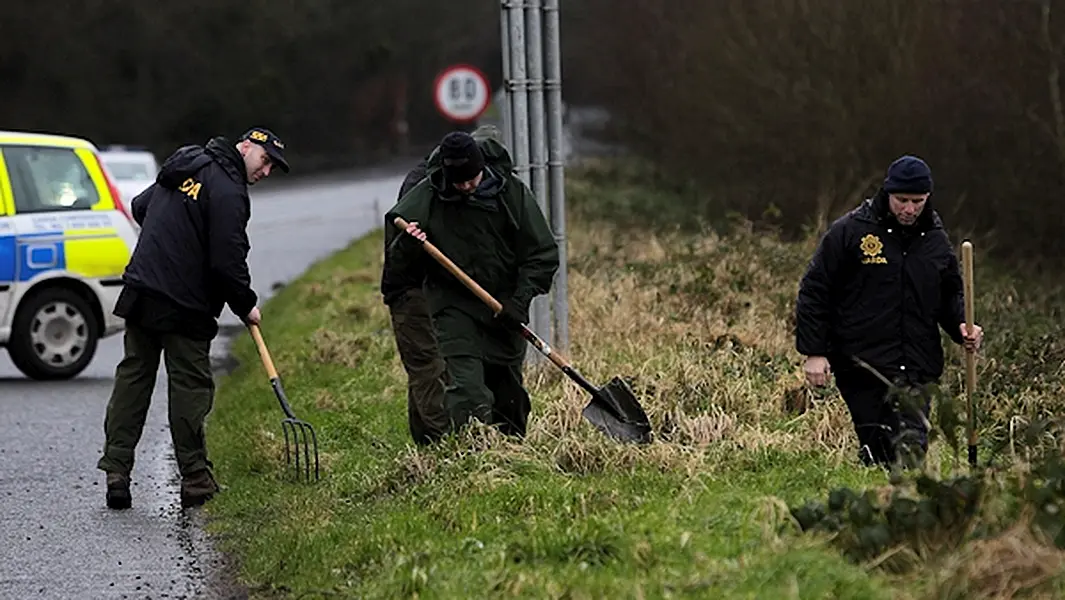
A similar car with what appeared to be a vinyl wrap and alloy wheels was identified later that night driving around Clogherhead, going up and down the street, apparently trying to identify a target. Two cars consistent with Suspect A’s BMW and the stolen Volkswagen Passat were later identified travelling north in convoy from Clogherhead towards Dundalk using back roads rather than the M1 motorway. Around 5am a car arrived back at Suspect A’s house. The Volkswagen Passat was stashed where it would not be found while the gang waited for Friday night's raid.
In the box Brady said he couldn't remember where he stayed on the night the car was stolen but it was apparent from mobile phone evidence and photos found on Jessica King's phone that Brady did not leave Suspect A's side throughout that period. With Brady and Suspect A linked to the car used by the armed robbers, gardai were able to focus on what they were doing at the time of the robbery to establish if they had an alibi.
Among the evidence put forward by the prosecution was the fact that two phones belonging to Brady and phones belonging to Suspect A and Suspect B were active until about one hour before the robbery when they went completely silent. The raiders had used walkie-talkies to avoid being traced by their phones. The three men's phones remained inactive for about one hour after the robbery.
Suspect B's phone also appeared to be frantically trying to contact Brady minutes before the phones went dead, suggesting Suspect B was anxious to find Brady at or near the rendezvous point in Lordship. CCTV showed that the raiders were dropped off at a laneway behind the credit union about 40 minutes ahead of the raid. It was a stormy night and investigators speculated they may have sheltered in a shed on the laneway but no forensic evidence was found.
Testing garda response times
At 4.38am four nights before the raid at Lordship, Suspect A's brother called gardai and reported that men dressed in black were hanging around a lorry container in his yard. Garda Robert Peelo was among the gardai who responded. He told the trial that he checked the area but saw nobody and noticed a heavy dew on the lawn but no footprints other than those left by gardai. Several gardai arrived to investigate but all left having seen no sign of intruders or any getaway vehicle on the dark and quiet country roads leading to the house. The prosecution believed the call to be a test of garda response times as the house is a short distance from Lordship.
Circumstantial evidence
The circumstantial evidence was bolstered by Brady's lies, his failure to properly account for his movements around the time of the robbery and a number of other suspicious matters that, as prosecution counsel Lorcan Staines SC said, on their own would amount to nothing but when put alongside all the other evidence proved that Brady was guilty.
Witness Douglas Hughes linked Brady indirectly to the site where the Volkswagen Passat was burned out. He described being awoken in the early hours on June 16 2012, six months before the Lordship raid, by a van passing his home at the corner of Chaleybeate Road and Cortamlat Road in Co Armagh, close to Cumson's Lane where the burnt remains of the Volkswagen Passat would be discovered. Mr Hughes jumped out of bed and drove up the road because he knew by the sound of the van "straining" to get up the hill and the hour of the morning that it was probably fuel launderers dumping waste cubes. He said: "I knew it was somebody up to no good. There's no cause for anybody to be up that road at that time in the morning."
A short distance up the road, close to Cumson's Lane, he came across a white Transit van and saw two young men in the act of dumping diesel cubes. When they saw him they drove off but he gave chase for a few miles and reported the van's registration to gardai. A van with the same registration was later pictured at the yard where Brady was known to be involved in moving laundered diesel cubes and Brady admitted to having driven the van on occasion. On its own it didn't prove much, but it suggested Brady and his associates were familiar with the remote, meandering network of country lanes leading to the burn site.
Farmer Alan McBride bolstered the suggestion that Suspect A's car was used in the robbery when he said he saw a dark-coloured Volkswagen followed by a BMW 5-Series, the same model as Suspect A's, driving past his farm shed on Chaleybeate Road within 30 minutes of the Lordship raid. The two cars traveled at high speed and within 20 minutes the BMW returned without the Volkswagen and headed off in the direction it had come.
There was also the alleged scoping exercise where Suspect A's car was captured on CCTV driving past Lordship Credit Union a few hours before the raid with the passenger side window down. Brady insisted it was not a scoping exercise but the prosecution questioned why Suspect A drove past his own home, past one service station and past Lordship, then pulled into another service station that overlooks the credit union simply to buy a bottle of water before returning past Lordship with the window down. Why didn't he just stop at the first service station, they asked. And why have the window down on a wet and stormy day?
"Murdered a cop"
The evidence of two people who knew Brady when he lived in America was what nominated Brady as the shooter. Molly Staunton was described as an unreliable witness by the defence because she changed her evidence under cross examination and then reverted to her original position when reexamined by the prosecution. But Mr Staines pointed out that Ms Staunton had no reason to lie, no animus against Brady and there was no suggestion that anyone was putting pressure on her to give evidence.

She told the trial that she was going out with a friend and roommate of Brady's in New York and one evening when she was in their apartment Brady emerged from his bedroom and went on what Ms Staunton described as a "rant". He was crying, possibly drunk and said he was "the most feared man in Ireland" and a gangster. But he was also afraid that he wouldn't be a good father to his unborn son and revealed, "that he was in fear of the cops coming to the apartment because he shot a cop in Ireland."
Ms Staunton also heard him say, "that he had murdered someone in Ireland and had to carry around the guilt of having murdered a cop in Ireland."
Daniel 'Dano' Cahill
Daniel Cahill (28) was cross examined for several days about his testimony in which he said that he heard Brady admit to shooting a garda on three occasions in New York. Mr Cahill told Brendan Grehan SC for the prosecution that he comes from Dublin 13 and moved to New York in 2013 when he was 20 years old. He started working in the Coachman's Bar on Katonah Avenue in the Bronx in December of that year and over the following two years saw Mr Brady at the bar on most weekends.
The Coachman's, he said, could be "a bit rough" and had its "shady characters". It would be "nothing out of the ordinary," he said, to have people "swinging digs" at one another. He recalled that on one night Brady was punched by another man and suffered a gash above his eye that bled heavily. The person who threw the punch left the bar and Brady went to the bathroom where the witness followed him. Mr Cahill asked Brady what had happened but Brady "just ranted about what he was going to do now". The witness added that Brady was "shook and erratic and emotional" and kept saying he was going to kill the other man. He recalled Brady speaking into the bathroom mirror as he cleaned the blood from his face and hands, saying people know what he had done and what he was capable of, that he would shoot the other man and it wouldn't be the first person he had shot.
Mr Cahill added: "He said he [the other man] should know better because he had shot a member of An Garda Siochana in Ireland and it was a stupid thing to retaliate or mess with him."
Mr Cahill couldn't recall precisely when this happened but thought it was 2014. The witness remembered a second occasion in the Coachman's when Brady arrived in the evening after work and was drinking heavily until the early hours. He was down and stopped Mr Cahill to talk to him about "things he had done in his life which were going to come back on him."
Brady "broke down" for 90 minutes to two hours and asked multiple questions that the witness thought were strange. He said: "He referenced killing people and how he felt about it." At the time Mr Cahill didn't know about Det Gda Adrian Donohoe and didn't know if Brady was "talking nonsense" but Brady told him that he was involved in a "robbery gone wrong that had led to him shooting someone. A member of An Garda Siochana." The witness later said: "He mentioned multiple times that he had shot a garda in the course of this robbery."
"He mentioned multiple times that he had shot a garda in the course of this robbery."
The witness described a third incident in 2015 while he was still working at the Coachman's. One night some customers invited him to a house party after he had finished his shift. When he arrived at the house he met Brady and three other men who were "trying to outdo each other" in what he described as a "pissing contest" to see who was the one you would not want to get on the wrong side of. He said Brady "decided he had the most experience because he was the only person there who had killed someone."
As the conversation went on the witness said he heard Brady say he was the only person who had ever used a gun to kill someone.
Mr Cahill said: "He said that everyone around knows who he is and what he had done and the crimes he had committed and this was why nobody wants to get on the wrong side of him." He said he also heard him say that he shot a garda and while talking about his feelings said that it "takes a certain type of person to manage these feelings well".
Mr Cahill felt that Mr Brady wasn't drunk and was "owning that he had done something or was capable of something, like we should look at him in a different manner."
Mr Brady had told the group that it was a big burden to carry around and that he had nightmares, "dreams where he sees bangs, guns shots, people screaming."
Mr Cahill's lengthy cross examination by Justin McQuade BL for the defence was among the most controversial aspects of the trial. Mr Cahill said he was a childhood friend of Vincent Ryan and knew his brother Alan Ryan, two dissident republicans who have been shot dead in separate attacks. Mr McQuade put it to Mr Cahill that before he left Ireland he was a member of the "Ryan crew" or Dublin Real IRA, a suggestion the witness strongly denied. When Mr McQuade suggested that the witness had been an active member of the Dublin Real IRA the trial judge intervened, dubbing it an outrageous question and telling the jury it should never have been put to the witness. Mr Cahill also denied any involvement in an assault on Brady on St Patrick's Day 2015 and insisted that he was not put under pressure by Homeland Security to give evidence. Mr Cahill accepted that he hid in his attic for about two hours when Homeland Security called to his home on 25 July 2019. Officers searched for him and found him along with a suspected cannabis plant and some steroids. Later that same day Mr Cahill gave a statement to gardai at Yonkers Police Precinct and despite not having any legal status in the US he was allowed to continue living in the US. Mr McQuade put it to him that Homeland Security told him to make a statement or be deported on the next flight to Dublin. He strongly denied this, saying he wanted justice for Det Gda Donohoe. Special Agent Mary Ann Wade of the Department of Homeland Security also denied that any promise or offer had been made to Mr Cahill but she refused to answer questions about his immigration status.
Unusual decision
Aaron Brady took the unusual decision to take the stand and give evidence in his defence. He insisted that at the time of Det Gda Donohoe's murder he was laundering diesel at a yard on Concession Road in south Armagh. He said he had lied to Sgt Moroney and again to gardai when he gave a voluntary statement ten days later because he didn't want to implicate himself in diesel laundering. In his statement in February 2013 Brady told gardai that he had gone to the yard but was unable to load any cubes of diesel waste because the forklift wouldn't start. He said he was there for about 15 minutes and left at about 8.20pm. He told them he then went to a friend's house on Lough Road and later went to Ms King's house where he remained until 3am. Brady accepted that he had lied in that statement but insisted he only lied to hide his involvement in diesel laundering.
The diesel laundering alibi was first submitted to the prosecution in September last year, more than six years after Brady's initial untrue accounts and when his trial was due to go ahead about two weeks later. On July 27 2018 Brady received the book of evidence and a district court judge told him that he had two weeks to submit a notice of alibi. He was also asked by gardai in interview in 2018 if he had anything he wished to say and was warned that if he did not say something that he would later rely on in court a jury could draw inferences from that. Brady's lawyers said they wanted to wait until the prosecution had disclosed its evidence before submitting a notice of alibi and defence barrister Michael O'Higgins SC said it would be "hideous" to expect a lawyer to advise his client to submit a notice without knowing the prosecution's case. It was never explained why Brady would have to wait until seeing disclosure before being able to say where he was at the time of the robbery.
"Badge of honour"
Lorcan Staines closed the case for the prosecution, telling the jury that Brady "wore the shooting like a badge of honour" when he moved to America and believed he was "beyond the long arm of the law".
He described Brady as a "skilled and practised liar" who told a "litany of lies" to gardai and to the jury for his own advantage. He said that when Brady moved to America he used the shooting of Det Gda Donohoe to "intimidate and curry influence" and talked about it in front of a number of people on different occasions, "sometimes crying, lamenting in drink or bragging with his chest puffed out."
He said Brady was confident that nobody would speak up when gardai arrived in New York to investigate, but added: "He was wrong about that. Not all the people he talked to about this were willing to turn the other way. Two came to give evidence."
Mr Staines told the jury that the prosecution relies on circumstantial evidence, which he described as a series of matters that on their own could simply be coincidence. He added: "It's your personal tolerance when coincidence is put on top of coincidence until there comes a point that it is an affront to common sense that all these little things are coincidence."

He reminded the jury that Mr Brady described himself as a victim of a garda campaign and the media. Counsel said it would be "easy to ridicule that" but he wanted to look at it coldly and dispassionately and ask, "could this all be a mistake, a lot of bad luck, a lot of strange circumstances that could happen."
He pointed to evidence that he said shows two associates of Mr Brady who can't be identified, Suspect A and Suspect B, travelling to Clogherhead three days before events at Lordship Credit Union to steal a Volkswagen Passat that was used in the robbery and fatal shooting.
If this were just coincidence, he said, CCTV from Clogherhead around the time the Volkswagen was stolen from outside a house in the village would not have shown Suspect A's distinctive BMW 5-series with a modified roof but another BMW 5-series with a modified roof. He said further CCTV footage showing Suspect A's BMW with the passenger side window down while it passed through Lordship hours before the robbery would not be evidence of a scoping exercise. The specific time when Aaron Brady has said he was alone and laundering diesel "happened to coincide" with the time that a separate gang of local men were planning to rob Lordship Credit Union. He said the jury would have to believe that all the phones belonging to Mr Brady, Suspect A and Suspect B were inactive for "innocent reasons" for more than two hours at a time that "coincides perfectly with the robbery at Lordship Credit Union".
He suggested a series of phone calls between Mr Brady and Suspect B at relevant times would have to be further coincidence and it would be a coincidence that a BMW 5-series was seen passing an area close to where the Volkswagen was burned out shortly after the robbery. A further coincidence would be that Suspect A's father's car was seen travelling at speed close to Lordship shortly after the robbery.
The burn site, off a remote country lane in south Armagh, was also used six months earlier as a dump site for laundered diesel by someone driving a van that Mr Brady is known to have driven.
Counsel asked the jury to consider the further coincidence that Brady, Suspect A, Suspect B and Suspect A's brother "fled to all corners of the world" shortly after the shooting. It would, counsel said, also have to be coincidence that Daniel Cahill and Molly Staunton said that Brady had confessed to shooting a garda in the course of a robbery while he lived in America. Mr Cahill would have to have done so out of personal animus or because he was under threat from Homeland Security, while Ms Staunton, "an American citizen with no animus whatsoever mistakenly told you what you heard".
Mr Staines concluded: "Is that reasonably possible? That would be some string of unfortunate events. The prosecution leaves that determination in your hands."
Defence
Michael O'Higgins SC for the defence told the jury that Daniel Cahill had given "the most significant evidence" in the case but, "he might have had a lot of motives to make things up." He said the background to Mr Cahill giving evidence was "shrouded in mystery" and that he may have been subjected to threats or inducement by Homeland Security before speaking to gardai. Counsel asked the jury to consider why, five years after Mr Cahill first claimed to have heard a confession from Aaron Brady, he "falls out of the sky with this evidence" on July 25, 2019 when he gave his first statement to gardai.
Mr O'Higgins reminded the jury that Mr Cahill told them that he gave evidence because he wanted justice for Detective Garda Donohoe, his family and for the Irish justice system. Counsel said: "The first thing I want to do is stress test that claim."
Mr O'Higgins said the witness had claimed to know nothing of the murder of Det Gda Donohoe even after he heard Mr Brady make his alleged confessions. Counsel said: "Maybe it's possible to ignore it the first time and not take it seriously, put it down to drunken rambling, but then there's the second time. In the internet age would you be mildly curious enough to even google the event. Daniel Cahill didn't. Didn't do it after the third or the fourth time. Does that sound to you like someone with a burning desire to do justice?"
Maybe it's possible to ignore it the first time and not take it seriously, put it down to drunken rambling, but then there's the second time.
Mr O'Higgins questioned why the witness didn't tell any of his friends in the New York police, who he practiced jiu jitsu with every week, his wife or anyone else.
In his testimony Mr Cahill said that he met a number of gardai on St Patrick's Day 2017 who were talking about Det Gda Donohoe and Aaron Brady. Mr Cahill said that he told the gardai present that Aaron Brady had admitted to him that he killed a garda. Mr O'Higgins suggested this was a lie told by Mr Cahill because he needed to explain why he hadn't spoken about the alleged confession for so many years.
Had the conversation taken place, counsel said, the gardai who heard it would have taken Mr Cahill's details, passed the information up the line until it got to the investigation team and a detective would have taken the next flight to New York to speak to Mr Cahill. "None of that happened," counsel said, "and it didn't happen because the conversation was completely invented."
Mr O'Higgins said the catalyst for Mr Cahill coming forward was "an early morning knock on the door" from eight or nine members of Homeland Security, including an enforcement and removal officer. When this happened, counsel said, Mr Cahill "had an unusual reaction. He took himself off to the attic, naked, and stayed there for a number of hours." Mr O'Higgins questioned how, in circumstances where drugs were also found in the apartment, no charges were brought and despite being a visa overstayer who had not filled out the paperwork to apply for status to remain, Mr Cahill was released. He reminded the jury of the evidence of Kerry Bretz, who said that in his 30 years as an immigration lawyer in the US he had never seen that happen.
Counsel further asked the jury to consider if it is normal that during the trial Homeland Security refused to answer questions about Mr Cahill's immigration status or what was said to him when he was detained. He questioned why the Director of Public Prosecutions allowed Special Agent Mary Ann Wade to dictate what questions she would answer and asked the jury to imagine the gardai in similar circumstances, refusing to say if Mr Cahill was arrested and refusing to answer questions about his detention. He added: "You have a situation which is unprecedented that witnesses will come in here and say, here’s what’s on and off the agenda." He said such an approach rewrites the rules of a criminal trial in a "radical and unprecedented" way and would be something you might expect to see in a "tinpot dictatorship".
Mr O'Higgins also reminded the jury that Mr Cahill was pictured with Dean Evans 16 days after Det Gda Donohoe was shot dead and 24 days before Mr Evans murdered Peter Butterly outside the Huntsman Inn in Gormanston, Co Meath. He said the photograph was introduced by the defence not to visit Dean Evans's bad character on Mr Cahill, but to call into question his claim that he did not follow the news and did not hear of the shooting of Det Gda Donohoe until years later. He said: "If you are hanging around that milieu of people committing those types of crimes, often in the name of Republican activities, the fact that a garda gets shot is a talking point." Counsel told the jury that Brady had lied to gardai to cover up his involvement in diesel laundering and nothing else.
None of the 12 jurors believed Brady when he said he was laundering diesel at the time of the robbery and 11 were willing to convict him of capital murder. He will be sentenced to life with a mandatory minimum of 40 years, suggesting he will not be released until he is 67 years old. If he is granted remission on that 40 years he will spend 30 years in prison and will emerge from prison as a 57-year-old man.
